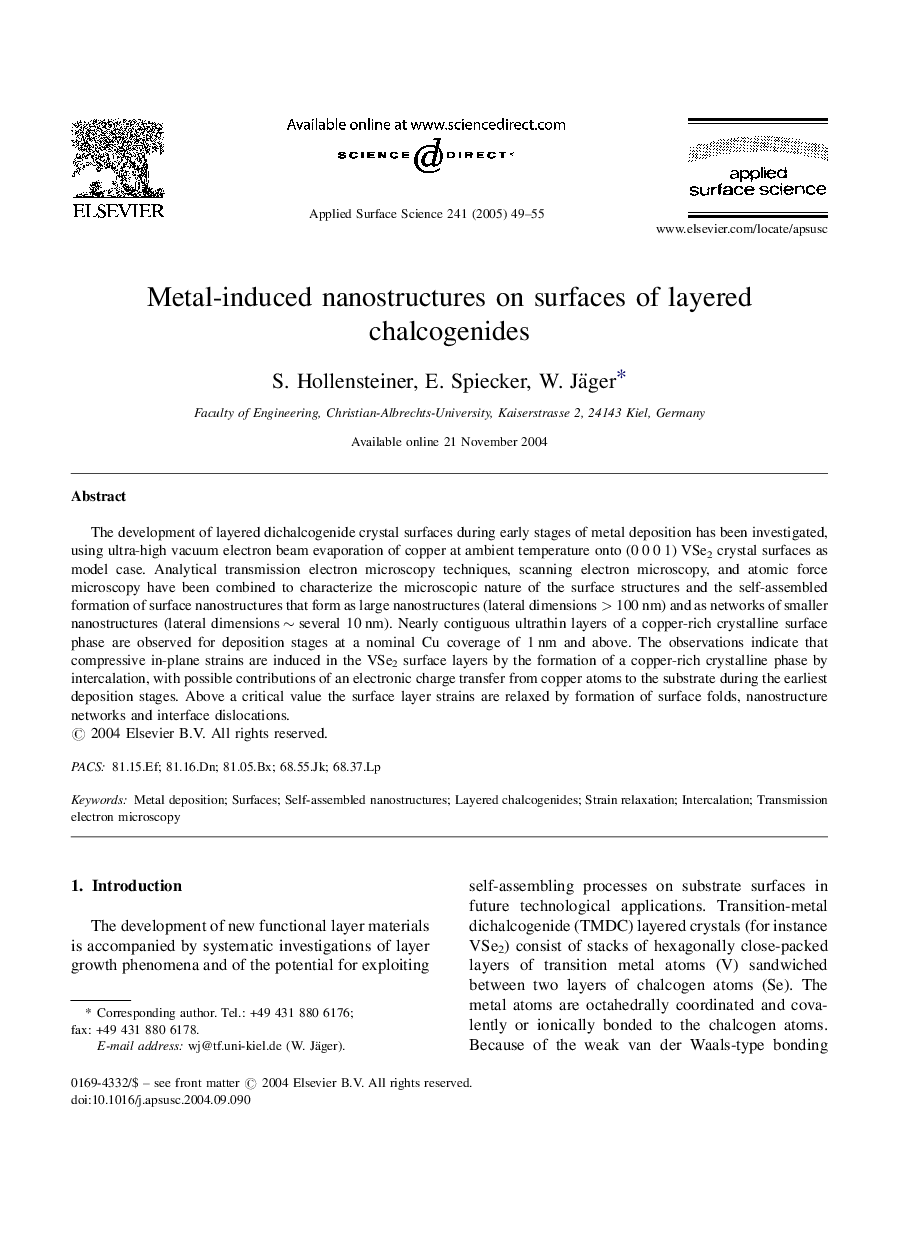| Article ID | Journal | Published Year | Pages | File Type |
|---|---|---|---|---|
| 9567511 | Applied Surface Science | 2005 | 7 Pages |
Abstract
The development of layered dichalcogenide crystal surfaces during early stages of metal deposition has been investigated, using ultra-high vacuum electron beam evaporation of copper at ambient temperature onto (0 0 0 1) VSe2 crystal surfaces as model case. Analytical transmission electron microscopy techniques, scanning electron microscopy, and atomic force microscopy have been combined to characterize the microscopic nature of the surface structures and the self-assembled formation of surface nanostructures that form as large nanostructures (lateral dimensions > 100 nm) and as networks of smaller nanostructures (lateral dimensions â¼Â several 10 nm). Nearly contiguous ultrathin layers of a copper-rich crystalline surface phase are observed for deposition stages at a nominal Cu coverage of 1 nm and above. The observations indicate that compressive in-plane strains are induced in the VSe2 surface layers by the formation of a copper-rich crystalline phase by intercalation, with possible contributions of an electronic charge transfer from copper atoms to the substrate during the earliest deposition stages. Above a critical value the surface layer strains are relaxed by formation of surface folds, nanostructure networks and interface dislocations.
Keywords
Related Topics
Physical Sciences and Engineering
Chemistry
Physical and Theoretical Chemistry
Authors
S. Hollensteiner, E. Spiecker, W. Jäger,
